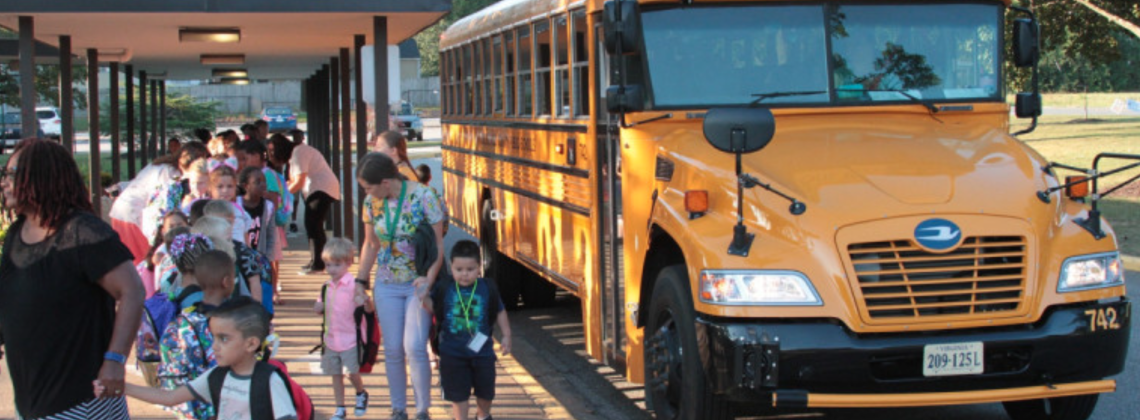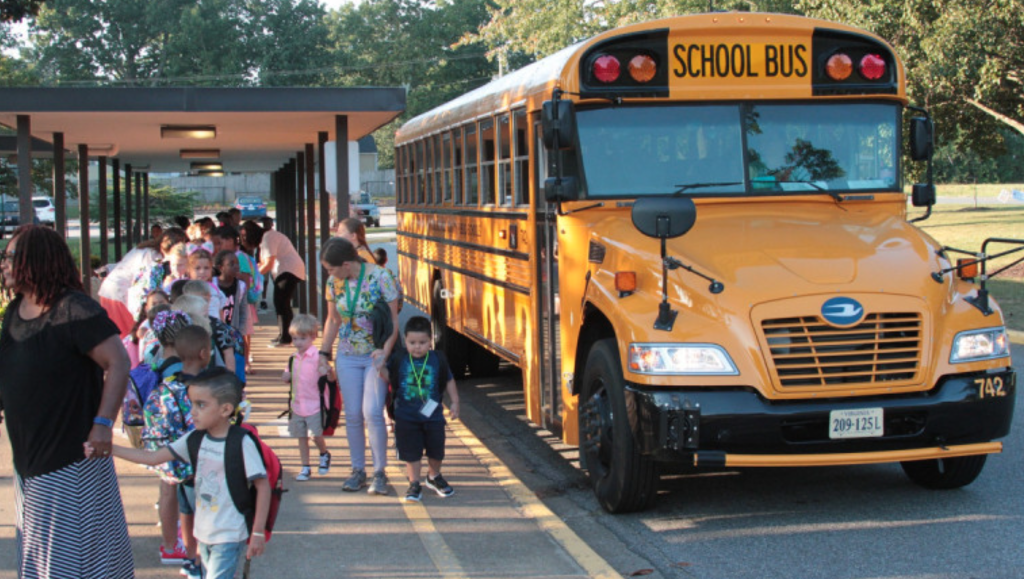

If only we give them a try
This election season, there’s one question you won’t hear in any stump speech: What would public schools look like if they reflected the wishes of America’s founding ideals? Oh, you’ll likely hear plenty about founding fathers and public schools. We’ve already been inundated with claims from the Supreme Court and state leaders in Florida, Louisiana, and Oklahoma about what the “Founding Fathers” wanted from schools. But those claims sidestep a vital point. Namely, the real founders of America’s public schools were driven by a radical republican hope that still has the potential to reshape the nation.
The people who founded public schools in the U.S. were not household names like George Washington. Rather, they were local community leaders. They tended to disagree ferociously about many issues, but there was one idea that united them. One primary purpose of their schools, as the founders of a public school in Deptford, New Jersey declared on December 5, 1774, was to bring together “the Children of the Rich & Poor.” These ambitious municipal leaders were far from alone. There was widespread agreement that public schools—real, American public schools—had to do more than just teach the three Rs. They had to foster a bold new equality among America’s rising generation.
To be sure, that vision usually did not cross the color line. Early public schools were either rigidly segregated by race or (often) for white children only. But not always. In the case of the first public schools in New York City, for example, an ambitious 1795 law declared that the public schools would be for “the children of white parents or descended from Africans or Indians.”
Passing that law, however, was far removed from making integrated American public schools a reality. As I argue in my new book, Mr. Lancaster’s System: The Failed Reform that Created America’s Public Schools, public schools had a long, messy beginning, evolving in fits and starts between the 1770s and the 1830s. Even with all the messiness, however, the people who created America’s public schools did not dispute one central goal. In cities and villages, North and South, one vision of public education was preeminent. As the founders of Philadelphia’s modern public-school system insisted, public schools would provide an “equality that no other system can afford.” Their main goal was a new kind of school: “Public Schools for the education of ALL CHILDREN, the offspring of the rich and the poor.”
In the first few decades of America’s nationhood, this vision was ubiquitous. In Portsmouth, New Hampshire, for instance, the founders imagined that their new public-school system could “level the artificial distinctions of society.” Their first priority was that “All meet on equality; on the broad and delightful ground of the pursuit of knowledge.”
The true founders of America’s public schools took for granted their goal to bring together rich and poor. As one working-class pundit wrote in 1829, real public schools could only exist if they were attended “by both rich and poor; otherwise we lay the foundation of inequality.”
Sadly, this founding dream of American public education has never been realized. The failure has been most egregious when it comes to schools’ stark racial inequality. As early as 1740, the colonial government of South Carolina banned literacy education for enslaved Black children. By 1835, even as cities like Charleston worked hard to make sure all white children had access to public schools, the state of South Carolina banned literacy education for all Black residents, free or enslaved. Virginia, Georgia, and Alabama also had laws barring Black Americans from access to public schools, or even to private ones.
Outside of the future Confederacy, too, ideas of equality in public schooling usually did not extend across the color line. In 1825 the state of Illinois expanded its public-school funding to include “all classes,” but only for “all white citizens between the ages of five and 21.” In Philadelphia an early law in 1802 mandated separate but equal public schools for Black children. In reality, though, no such school existed until 1822. And the Black-only public schools in antebellum Philadelphia were always woefully underfunded. In 1836, for example, the leaders of Philadelphia’s public schools insisted on a new cap: No classroom could have more than twenty-five students per teacher, but in 1838 one of the city’s segregated Black-only schools had only one teacher for one hundred and ninety-nine boys and two teachers for two hundred and fifty-one girls.
The legal racial segregation of United States public schools may have ended in 1954 with Brown v. Board of Education, but public schools have never achieved racial equality. Indeed, in the years since the abandonment of many federal desegregation efforts, racial segregation has only grown worse. In 1988, at the peak of desegregation efforts, just over one in twenty non-white students attended an “intensely segregated” school, where almost all the other students were also non-white. By 2016, that number had jumped to almost one in five.
Even among white children, the founders’ dream for public education has never been realized. The city of Boston, for instance, created public schools for all in the 1630s. In 1784 the city declared that its public schools were meant for “the Benefit of the Poor and the Rich.” Yet as late as 1818, only thirty percent of eligible children attended Boston’s public schools. Although the schools were legally open to all, before 1818 they only served children older than age seven who had already learned basic literacy and numeracy. In practice that meant mainly white boys from families with the means to pay for private tutors.
In spite of centuries of change, public schools have remained divided by family income as well as by race. Because so much of the funding for public schools comes from local property taxes, school resources have always reflected the wealth of the local community. Today’s glaring income disparities have only exacerbated the problem. By 2017 forty percent of low-income children—of any race—attended schools where at least three-quarters of their classmates were also poor.
What would it mean if the United States honored the vision of its educational founding fathers? How could the landscape of public education change if our primary goal was to bring together all students? What if we strove to avoid laying “the foundation of inequality”?
For one thing, we would have better schools. There is no shortage of evidence that mixed-income schools can make a big academic difference. One study found that students from lower-income families in mixed-income schools showed thirty percent more improvement in high-school test scores over children in schools where most children were also from lower-income homes. For middle-class white children, too, we know that diverse schools tend to improve key educational factors such as creativity, motivation, and critical thinking.
Beyond these academic factors, we can envision vast social benefits from creating public schools that bring together children from different backgrounds. Imagine the possibilities if the founders’ dreams had been realized, if America’s children met people from all walks of life.
So what stands in the way?
As historians such as Jack Schneider have pointed out, we Americans are addicted to ranking school districts by measures that tend to exacerbate segregation. Ideas about a “good” school often include assumptions that drive people apart instead of bringing us together. When rankings overemphasize standardized-test scores they tend to reward exclusive, wealthy communities and penalize everyone else.
If we want to create truly public schools, that would have to change. It would not be easy, but it is not even possible as long as our public discourse ignores the founders’ dream of equality.
Adam Laats is Professor of Education and History at Binghamton University (SUNY). He has published widely about the history of U.S. education, including award-winning books such as The Other School Reformers (Harvard University Press, 2015) and Mr. Lancaster’s System: How a Failed Reform Created America’s Public Schools (Johns Hopkins University Press, 2024). He has also offered commentary on NPR, CNN, Slate, The Atlantic, Chronicle of Higher Education, The New Republic, Nature, and the Washington Post.
Image: Chesterfield County Schools